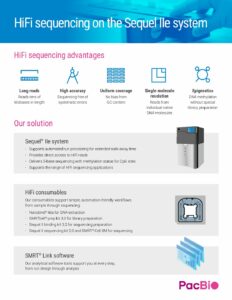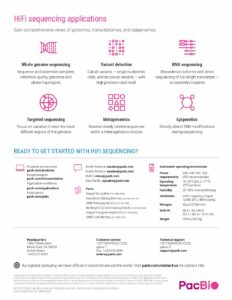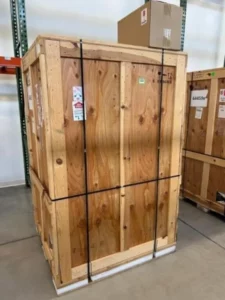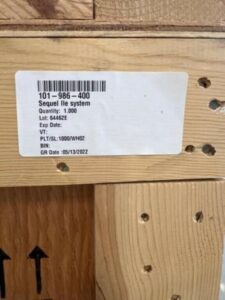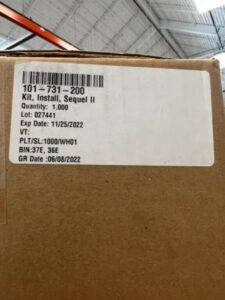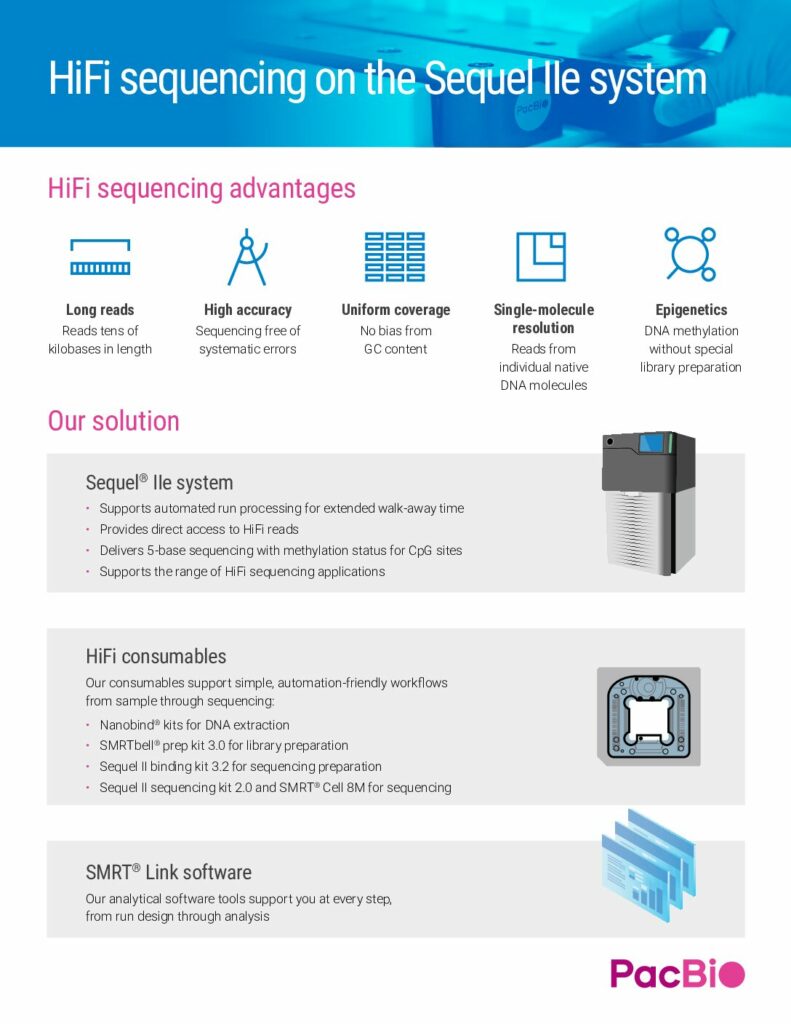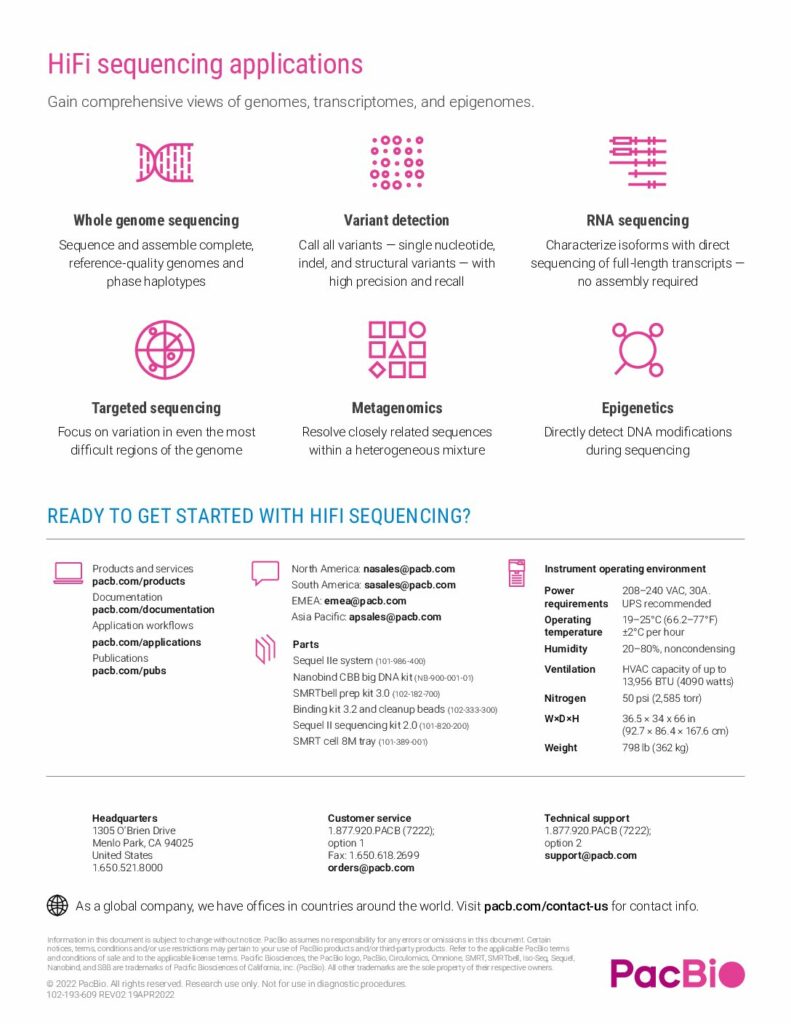The standard-setting Sequel IIe and Sequel II systems deliver:
- Direct access to the only highly accurate long reads: PacBio HiFi reads
- 5-base genome sequencing (A, T, G, C, 5mC) in native DNA, for immediate access to the epigenome with no special workflow or data processing steps
- Deeper biological insights, less data processing, and faster results thanks to the exceptional clarity of HiFi reads
- Reliable and affordable high-throughput sequencing for a broad range of applications
For next generation sequencing, the PacBio Sequel IIe offers single molecule real-time (SMRT), long-read, DNA sequencing technology on at large though flexible scale. This platform is suitable for large scale projects such as de-novo sequencing of large and complex (plant) genomes, full length transcriptome analysis (Isoseq) large amplicon sequencing, as well as structural varian detection and haplotype phasing.
The Sequel IIe system offers the ability to run multiple chips (SMRT cells) allowing flexible on-demand sequencing, using variable sequencing run time per SMRT cell analysis. Users deploy multiple flow cells as well as variable run times (up to 30 Hours) onto single experiments for greater speed or throughput resulting in high quality long read sequences (HiFi reads).
The performance of SMRT sequencing – each Sequel IIe SMRT Cells now allows up to 8 Million ZMW wells to be loaded for sequencing simultaneous.
Technical details
- Variable, up to 30 hour run time per SMRT cell
- Each Sequel IIe SMRT cell has ~ eight times the sequencing capacity of a Sequel SMRT cell
- 8M wells per SMRT cell resulting typically in more than 5M reads
- As much as 150 Gb per flow cell
- Read lengths are determined by your sample and experimental needs
- High Quality per base (<1% error rate) in HiFi reads, therefore making assembly, structural variation detection and phasing much more reliable, easier and faster.
- Sequel IIe sequences (native) DNA — meaning no amplification bias and retained modification information
Applications
- De-novo sequencing of large genomes
- Structural variation analysis
- Haplotype phasing
- Full length transcriptome sequencing (isoSeq)
- DNA modifications



